Did you know that the technology behind your smartphone, the car you drive, and even some of the most sophisticated medical devices are powered by one, tiny element? Welcome to the world of semiconductor manufacturing.
In today's digital age, semiconductors are not just a buzzword. With global reliance on technology surging, understanding semiconductors has never been more crucial. But what's happening behind the scenes might surprise you.
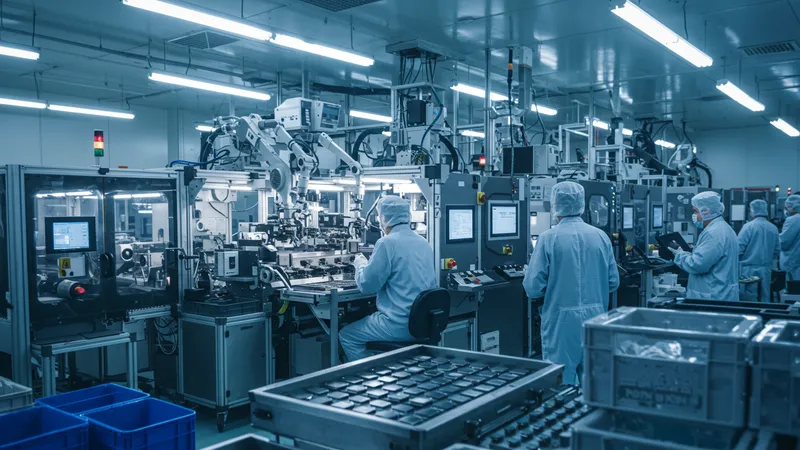
In 2023, a global shortage of semiconductors brought entire industries to a standstill. Automakers, for instance, saw production delays leading to billions in lost revenue. The impact was profound, shaking the very foundation of global supply chains. But that’s not even the wildest part…
Usually hidden from sight, the battle for semiconductor dominance sees tech giants pushing boundaries. From quantum computing to AI integration, each innovation promises to redefine what’s possible. But there’s more beneath the surface that’s seldom discussed. What happens next shocked even the experts…
When the pandemic hit, the semiconductor industry faced an unprecedented crisis. Manufacturing plants shut down, yet the demand for electronics skyrocketed with work-from-home becoming the norm. This misalignment led to a severe shortage, affecting everything from laptops to cars. Surprisingly, industries historically reliant on semiconductors were not ready for such a disruption. But there's a hidden layer to this chaos...
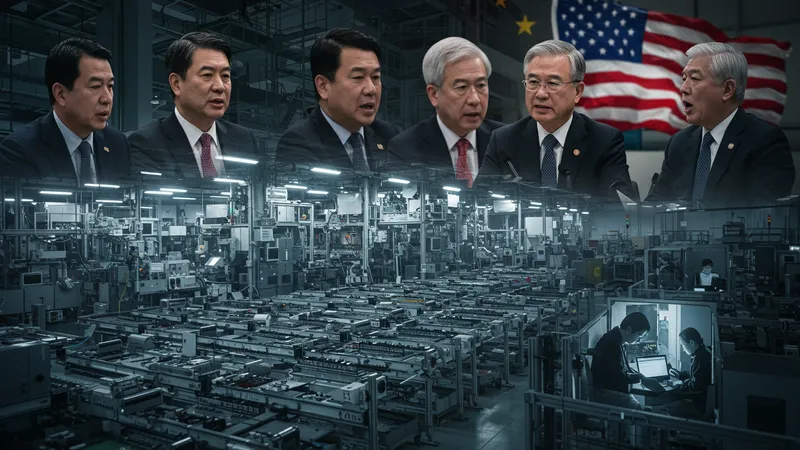
Few realize that geopolitical tensions played a critical role. With countries like China and the U.S. sparring over technology dominance, certain resources became strategic assets. The political landscape became as much a battlefield for semiconductors as the marketplace. Yet, the real undercurrents tell a curious tale...
Despite the challenges, companies struggled to diversify suppliers and production lines. The global supply chain became a labyrinthine puzzle of logistics and innovation. As some enterprises sank, others thrived with new collaborative models. But could these be sustainable long-term? There's one more twist to uncover...
The semiconductor shortage laid bare the fragile nature of global ecosystems—forcing industries to rethink resilience and adaptability. But is it possible to anticipate such an enigma again? What you read next might change how you see this forever.
Innovation is the lifeblood of semiconductors, but the pace is not without impediments. Chip manufacturers now engage in a technological tug-of-war, where scaling down the chip size to cram in more power is both the aim and the agony. It's where physics meets its match, pushing the very boundaries of current science. Yet, it's not just about making things smaller...
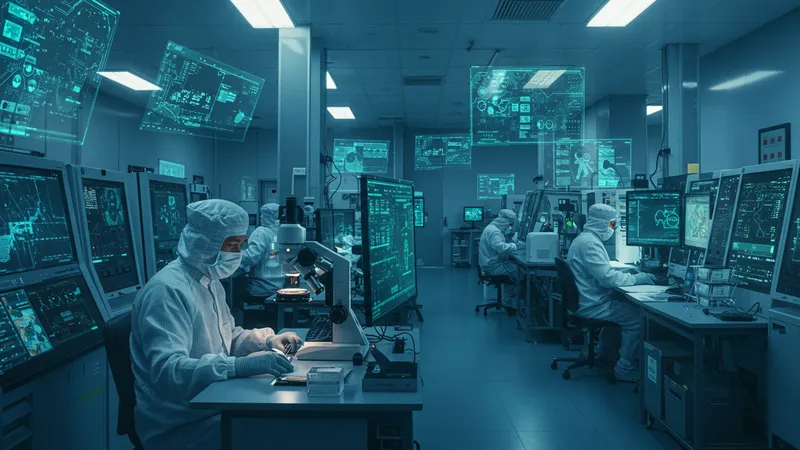
Beyond the geeking allure, these innovations impact realms we interact with daily. Your phone's extended battery life or that lightning-fast download speed owes much to these microscopic wonder workers. But, the hurdles don't solely lie in the scientific; ethics and environmental sustainability wrestle for a seat at the table too. What's next is even more perplexing...
Creating advanced semiconductors is an energy-intensive affair. The ethical dilemma of balancing technological advancement with carbon neutrality challenges businesses and governments. As innovators push for greener solutions, the question becomes whether cutting-edge can also be eco-friendly. It's a paradox not easily navigated...
Meanwhile, developing countries enter the fray, eager to tap into semiconductor manufacturing as a lever for economic growth. However, the requisite expertise and infrastructure present barriers that are not easily overcome. Yet, their rise in this domain could reshape the industry radically. Could they be the game-changers we need?
Enter AI and quantum computing, two catalytic forces that promise to redefine semiconductor innovation. Together, they hold profound potential to unlock new paradigms in both designing and testing chips. However, the collaboration between these technologies is not just complementary; it’s revolutionary, rewriting the rules of what's possible. But to what end does this symbiosis take us?
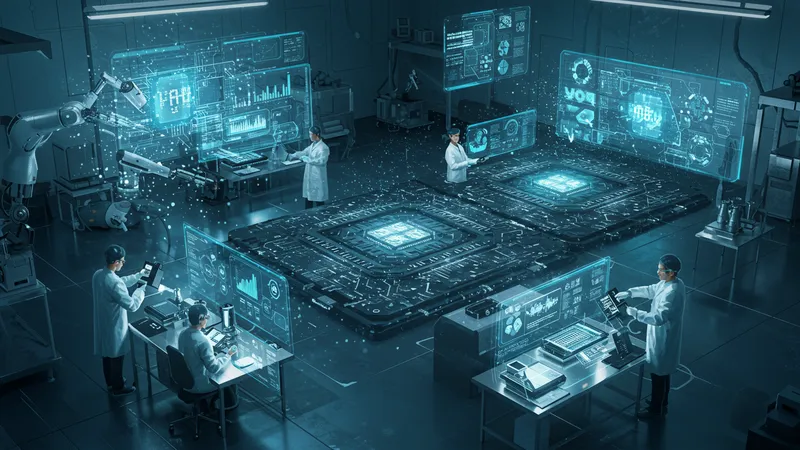
Artificial Intelligence, with its proclivity to evolve rapidly, assists semiconductor processes through predictive analytics and intelligent manufacturing. Its ability to enhance accuracy and efficiency is invaluable, yet it could overshadow human roles in the future production landscape. But there's more beneath the algorithmic curtain...
Quantum computing, although still in nascence, could revolutionize data processing speeds exponentially beyond current standards. Its integration with semiconductors holds the prospect of cracking the most complex problems imaginable. But what does this mean for current computing models? The questions keep on expanding...
While these technological alliances appear optimistic, they come with challenges of standardization, security concerns, and unpredictable ramifications. Yet, as AI and quantum embrace semiconductors, industries brace for unprecedented changes. The industry's evolution seems inevitable, but how fast and how far it will move is the question at hand...
The flip side of technological explosion in semiconductors is its environmental footprint. Production consumes enormous energy, contributing significantly to carbon emissions. Current manufacturing methods, though groundbreaking, remain unsustainable from a climate perspective. But there’s a story behind these numbers that needs attention...

The materials used in semiconductors include some rare earth elements, whose mining activities disrupt ecosystems worldwide. The environmental toll is severe, causing deforestation and water pollution. While companies strive for processing innovation, the balance between progress and conservation hangs by a thread. But that’s not the full picture...
Being at the forefront of eco-innovation, some companies are integrating more sustainable practices. From less toxic materials to more energy-efficient processes, the industry is slowly shifting. Yet, how quickly can these changes materialize to make a meaningful impact? The answers might surprise many...
As the demand for greener technologies grows, semiconductor manufacturers face increasing pressures to adapt. Yet, can the curve of innovation rise as steep as the call for sustainability? This controversial trade-off creates more questions that seemingly obscure the endpoint. What happens might well redefine industry priorities...
Unbeknownst to many, countries like Taiwan and South Korea are becoming semiconductor powerhouses, quietly influencing the tech world. Taiwan's TSMC, for instance, is pivotal, commanding a large chunk of the global market. Their strategies? Save for the spotlight, but reveal much about industry dynamics...

South Korea's Samsung stands out as another behemoth, adept at navigating fluctuating market demands and advancing chip technology. While many western tech companies depend on such Eastern innovations, the geopolitical implications simmer beneath the surface. The intrigue is continuous...
Their surging dominance raises questions about global dependence. Are we witnessing the emergence of new tech dominions? If these countries falter, what happens to the world's tech equilibrium remains to be seen. Solutions within this cryptic space are more than just geopolitics...
While debates over self-reliance versus globalization verbalize, these nations continue expanding their foothold. However, will they sustain leadership or fall prey to cyclical market shifts? The evolving narrative is fascinating, with each twist promising another revelation...
With every challenge faced, the semiconductor industry evolves, adapting to a future that comes faster than anticipated. As industries digitize and automation becomes the norm, demand for chips surges, presenting both opportunities and dilemmas. But the future is not just about growth...
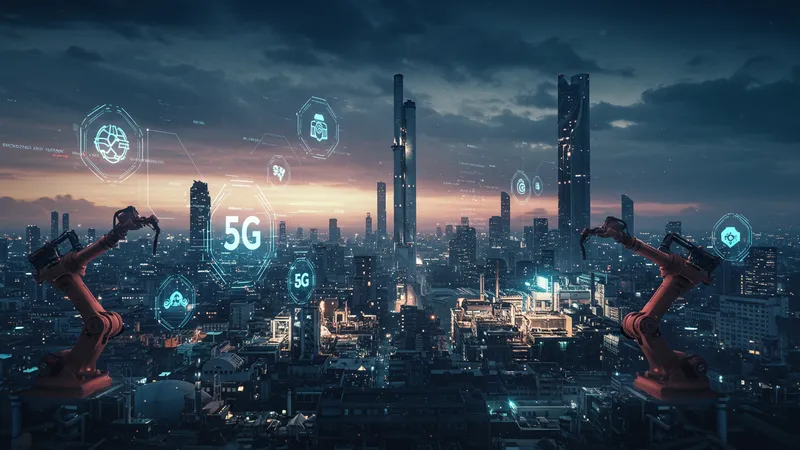
New technologies, like 5G and blockchain, hinge on advanced semiconductor capabilities, further elevating the stakes. Companies must innovate or risk obsolescence. But as history shows, it's not just technology that's evolving – so are its applications and implications...
As breakthrough innovations occur, the discussion increasingly veers towards the socio-economic impact. Will technology bridge societal gaps or widen them? The industry stands at a crossroads, where technological benevolence must be balanced against commercial exploitation. The path forward isn't as clear-cut...
The semiconductor sector is an unyielding pulse in the modern world, its developments reflecting broader trends in technology and society. Yet, understanding it fully challenges even the most informed minds. As we eagerly anticipate the next steps, there remains a transformative power yet unseen...
With every chip fabricated, we move one step closer to a revolution in how technology influences every aspect of our lives. This journey of piecing together the building blocks of our digital world is both intricate and awe-inspiring. But the next chapter might just redefine everything we know.
As colossal as these shifts appear, you hold the power to partake in this wave of change. Share these insights, keep the dialogue alive, and stay informed. Our digitized future is happening now, and it needs you to be a part of the conversation.